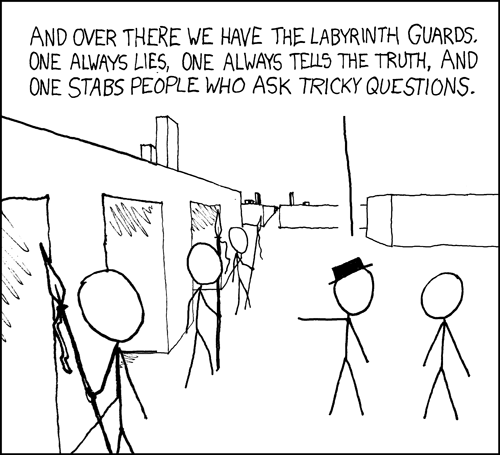MST : Kruskal's Algorithm
This assignment has three main objectives:
- Implement Minimum Spanning Tree
- Use Kruskal’s Algorithm
- You will use Scala’s built-in collection classes. These are discussed in the Odersky textbook and there is a lot of information about them on the Web.
Feel free to use the web for understanding the algorithms. In fact, I encourage you to find pseudocode on the Web and translate it to Scala.
Preliminaries
You should create a series of directories that look like this:
./mst
|-- build.sbt
`-- project
`-- plugins.sbt
`-- src
|-- main
| `-- scala
| `-- your solution goes here
`-- test
`|-- scala
|-- TrivialTestSuite.scala
`-- your tests goes here
The build.sbt file should have exactly this line:
scalacOptions += "-deprecation"
scalacOptions += "-unchecked"
scalacOptions += "-feature"
scalaVersion := "2.11.2"
libraryDependencies += "edu.umass.cs" %% "cmpsci220" % "1.3"
libraryDependencies += "org.scalatest" %% "scalatest" % "2.2.1" % "test"The plugins.sbt file should have exactly this line:
addSbtPlugin("edu.umass.cs" % "cmpsci220" % "2.2")Finally, here is TrivialTestSuite.scala:
import cmpsci220.hw.graph._
import MST._
class MSTTestSuite extends org.scalatest.FunSuite {
test("MST test1") {
val g = Graph(("A", 10, "B"),
("B", 20, "C"),
("A", 50, "C"))
val t = mst(g)
for (ns <- t.nodes.tails.filter(_.length >= 2)) {
val n1 = ns.head
for (n2 <- ns.tail) {
if (t.neighbors(n1).contains(n2)) {
println(s"$n1 -- ${t.getEdge(n1, n2)} -- $n2")
}
}
}
}
test("MST test2") {
val g = Graph(("A", 10, "B"),
("B", 20, "C"),
("A", 50, "C"),
("A", 6, "D"),
("C", 7, "D"))
val t = mst(g)
for (ns <- t.nodes.tails.filter(_.length >= 2)) {
val n1 = ns.head
for (n2 <- ns.tail) {
if (t.neighbors(n1).contains(n2)) {
println(s"$n1 -- ${t.getEdge(n1, n2)} -- $n2")
}
}
}
}
test("MST test3") {
val g = Graph(("A", 4, "B"),
("B", 3, "C"),
("C", 2, "D"),
("D", 1, "E"),
("E", 1, "F"),
("F", 5, "A"),
("A", 3, "D"),
("B", 4, "D"))
val t = mst(g)
for (ns <- t.nodes.tails.filter(_.length >= 2)) {
val n1 = ns.head
for (n2 <- ns.tail) {
if (t.neighbors(n1).contains(n2)) {
println(s"$n1 -- ${t.getEdge(n1, n2)} -- $n2")
}
}
}
}
test("MST test4") {
val g = Graph(("A", 10, "B"),
("B", 20, "C"),
("A", 50, "C"),
("A", 6, "D"),
("C", 7, "D"))
val t = mst(g)
for (ns <- t.nodes.tails.filter(_.length >= 2)) {
val n1 = ns.head
for (n2 <- ns.tail) {
if (t.neighbors(n1).contains(n2)) {
println(s"$n1 -- ${t.getEdge(n1, n2)} -- $n2")
}
}
}
}
test("MST test5") {
val g = Graph(("A", 6, "B"),
("B", 5, "C"),
("C", 1, "A"),
("C", 5, "D"),
("C", 6, "E"),
("C", 4, "F"),
("D", 2, "F"),
("E", 6, "F"),
("A", 5, "D"),
("B", 3, "E"))
val t = mst(g)
for (ns <- t.nodes.tails.filter(_.length >= 2)) {
val n1 = ns.head
for (n2 <- ns.tail) {
if (t.neighbors(n1).contains(n2)) {
println(s"$n1 -- ${t.getEdge(n1, n2)} -- $n2")
}
}
}
}
}The Graph Abstract Data Type
For graph structure and methods refer the graph assignment homework.
Programming Task
Your task is to define a Solution object that implements Minimum Spanning Tree using Kruskal`s
algorithm.
You may use the following template to get started:
import cmpsci220.hw.graph._
import cmpsci220.hw.disjointset._
object MST {
// Create a list of tuples. Each tuple comprises of vertex1, weight of the joining edge and vertex2
def allEdges[V](graph: Graph[V, Int]): List[(V, Int, V)]= {
}
// Implement mst using Kruskal's algorithm
def mst[V](graph: Graph[V,Int]): Graph[V,Int]= {
}
}Submit Your Work
Use the submit command within sbt to create submission.tar.gz. Upload this file to Moodle.
